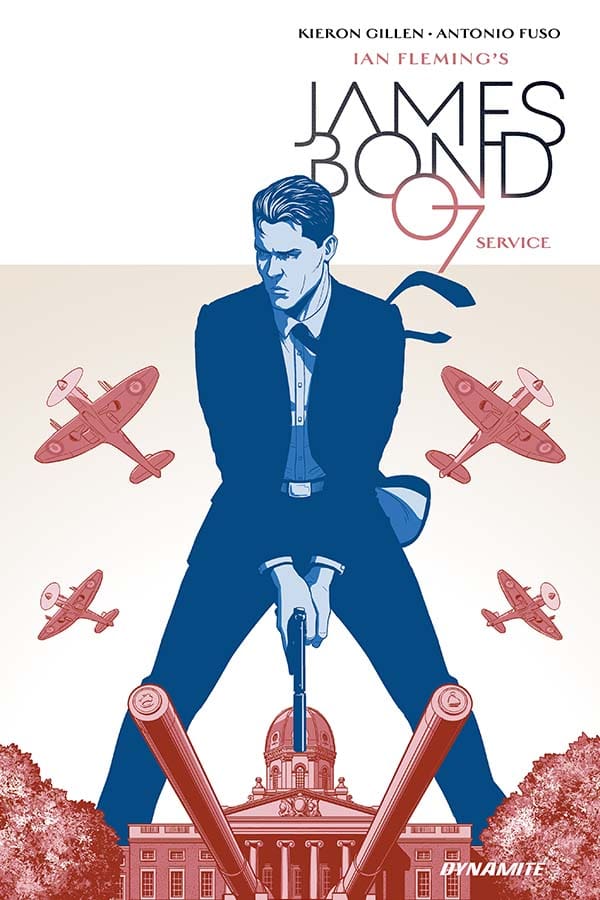On some level, James Bond has always represented Britain’s struggle for relevance on the world stage. Whether he acknowledged it or not, Ian Fleming created Bond as a kind of rebuff to America’s growing power post-World War II, proof that skill and ingenuity would always trump sheer power. And while that undercurrent fluctuates in importance depending on what’s happening in the real world, it seems first and foremost in James Bond: Service Special writer Kieron Gillen’s mind.
Though Gillen–who writes The Wicked and the Divine for Image and various Star Wars books for Marvel–is obviously writing fiction, the issue feels almost brutally relevant to the real world. After America’s new (fictional) Secretary of State publicly denigrates the long-standing “special relationship” with Britain, MI6 uncovers a retaliatory assassination plot planned for his upcoming visit to the UK. “It’s a nationalist time,” Bond’s CIA friend Felix Leiter says even before the would-be assassins are revealed as über-patriots, “you guys should know that.” Indeed, Brexit, the Trump administration and the anger and nationalism that drove both political movements are integral to the story Gillen tells and yet, he manages to merge them seamlessly with a traditional Bond story.
Though this is his first time writing the character, Gillen proves that he is at the top of his game here. What’s allowed Bond to endure for over half a century is his versatility. He can be serious and violent like Daniel Craig’s Bond or he can be arch and debonair like the late, great, Roger Moore’s Bond. Gillen’s version leans toward the latter. There’s a sense of humor underlying all the espionage that makes the proceedings enjoyable rather than dour. Like the scene when Bond tricks Moneypenny into acknowledging his flirtation or when he responds to the prospect of being punched in the face with almost polite resignation.
However, strong as the dialogue is, Gillen’s most important skill here is his efficiency. Because this issue is a one-shot, the first quarter is packed with exposition, yet you barely notice because each line either moves the story forward or gives us a sense of the characters’ personalities. However, Gillen also knows when to step back and let the images do the talking and artist Antonio Fuso and colorist Chris O’Halloran do a terrific job of keeping the story from feeling over-stuffed.
Fuso is best at conveying meaning through smaller gestures, like the subtle, wry twist of Bond’s mouth when he says something snarky or the way the dense panel structures create an impression of the full scene rather than a linear progression of events. He’s less adept at action scenes—which is unfortunate for a James Bond story. While most of the fights are fairly easy to understand, there’s an incident with a booby trapped door that’s particularly hard to follow. Luckily, O’Halloran’s work often mitigates any structural problems. He’s going for a realistic look, but the way he contrasts warm and dark colors within a single page not only makes them beautiful to look at as a whole, but helps guide the eye through the action. The way he renders violence is particularly striking, all solid colors and heavy contrast. It’s stylized in a way that undercuts the brutality—something that made Warren Ellis’s initial launch of the character at Dynamite a little hard to stomach.
Brutality is an inextricable part of the Bond character. He has license to kill and he uses it, but he’s also a little more fun to be around if he also has a sense of humor. Gillen understands that. James Bond: Service Special is strong precisely because it mixes espionage with humor, action and even a little bit real-world significance. There’s no reason you shouldn’t read it.
Rating: 9.5/10


